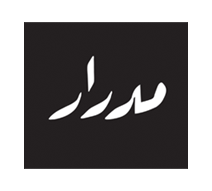Exhibition – Discursiveness
Exhibition – Discursiveness
Exhibition
Medrar for Contemporary Art
19 December 2016 - 19 January 2017
By Yannick Jacquet and Fred Penelle
Dia Hamed
The exhibition Discursiveness suggests analogy within the works of Yannick Jacquet, Fred Penelle and Dia Hamed as instances of an expansive communication between tactile ( and digital forms of practice. Their works meander across multiple stages and mediums like printmaking, sculpture and digital media. With a passion for luminance and shades, their works not only accentuate the stability of materials in static objects, but also strengthens the viewer’s senses towards the motion represented in a set of blinking pixels. In an immersive non-discursive setup, Jacquet and Penelle address transmission in old school wood engraving, vintage technologies and digital masking, while Hamed procedurally shuffles through skill, tool and automation. He tries to jabber in a conversation in which one can lose track of how “things” are made, lingering over the intermediate processes, languages and technologies of creation.
Mécaniques Discursives,Terrain and Viscosity, digitally animate and illuminate physical forms. Time deconstruction allow for invoking reverberation among the exhibited pieces. Transcending of substance towards observable mechanisms is how Yannick, Fred and Dia echo within the walls of Medrar’s exhibition space.
Mécaniques Discursives
Installation by Yannick Jacquet and Fred Penelle

While the passage of time seems to accelerate every day, Fred Penelle and Yannick Jacquet offer a pause, a suspension, a breath. A strange mechanism stretches across the wall, populated with shadowy chimeras. They are mysterious and yet somehow familiar. Is this a laboratory experiment or the plan for a future network? Minutely constructed like a fine clock, it traces connections, routes, genuinely-false, looping itineraries, inviting escape, inviting dreams. The narrative is deconstructed like a thousand-storied film script. Every effort is made to lead astray, to turn around, to forge ahead. Time is shredded, decomposed, lost…and yet everything references it. Mécaniques Discursives is like a parenthesis between two epochs: Gutenberg’s and Big Data’s. By contrasting the oldest form of image reproduction (woodcutting) with the most recent digital technologies, the installation straddles centuries and contracts time.
Terrain, Viscosity
Two installations by Dia Hamed


We’re currently witnessing an excessive development in the field of augmented vision. Various platforms are asking us to look around in 360º. A market boost in virtual reality products promotes a new experience of perceiving the surrounding environments, using additional information and intuitive controls. In order to supply enough media for such influx, big effort is now exerted in offering artists, designers and “ordinary people” accessibility to create and manipulate three dimensional worlds. Yet the act of simplifying 3D software interfaces contributes to our disconnection from the inherent complexity of how such tools are able to mimic surfaces and shades of our physical reality.
Dia Hamed draws back to the very essence of matter formation, trying to find resonance in the evolution of appearance from states of absolute randomness to patterns of natural systems, as well as in the development of computer algorithms from mathematical turbulence functions to spectacular simulations of natural textures. Random systems gain aesthetic appeal when they become manifest in pattern order. Patterns can only develop when randomness is perturbed by external forces, whether natural as of energy (gravity, pressure and temperature applied to particles) or artificial as of parameter adjustments (function dimensions and random seed number applied to pixels). Solid structures and fluid dynamics seem to share the same governing rule: the irregularity of data fluctuation, where data in this sense define the position and brightness of pixels on screen, same way as it does to particles in the real world.
Hamed transforms the medium from one state to another, between automated tools and the artist’s manual intervention. The symptom of Oscillation in his compositional process echos the irregular variations in which matter originates. Terrain and Viscosity are exercises in abstraction. Using light as the animating component of presentation, the visuals combine filmed natural textures with their peer synthetic representation in pixels, and converge over the surface of physical sculptures.
Terrain involves digital projection mapping on a raised-relief map. It highlights the contributions of Georgy Voronoi, Ken Musgrave and Kim Perlin to the world of computer graphics, specifically their discoveries in noise algorithms to simulate solid nature forms. Viscosity compares microscopic footage of soap reactions to its code generated simulation, within a sculpture made out of materials that were once in a liquid state. Viscosity features Alan Turing’s reaction diffusion systems and Steven Worley’s cell noise to simulate liquid forms.
Opening: Monday 19 December 2016, 7pm
Exhibition runs till 19 January 2017
Daily from 3pm until 9pm, except Friday
Address: 7 Gamal El Din Abou El Mahasen, 1st floor, Apt 4, Garden City
Graphic design: Tarek Rady
Translation: Sara Allam
Technical support: Mido Sadek





About the artists
Exhibition is curated by Medrar and supported by Pro Helvetia – Swiss Arts Council


